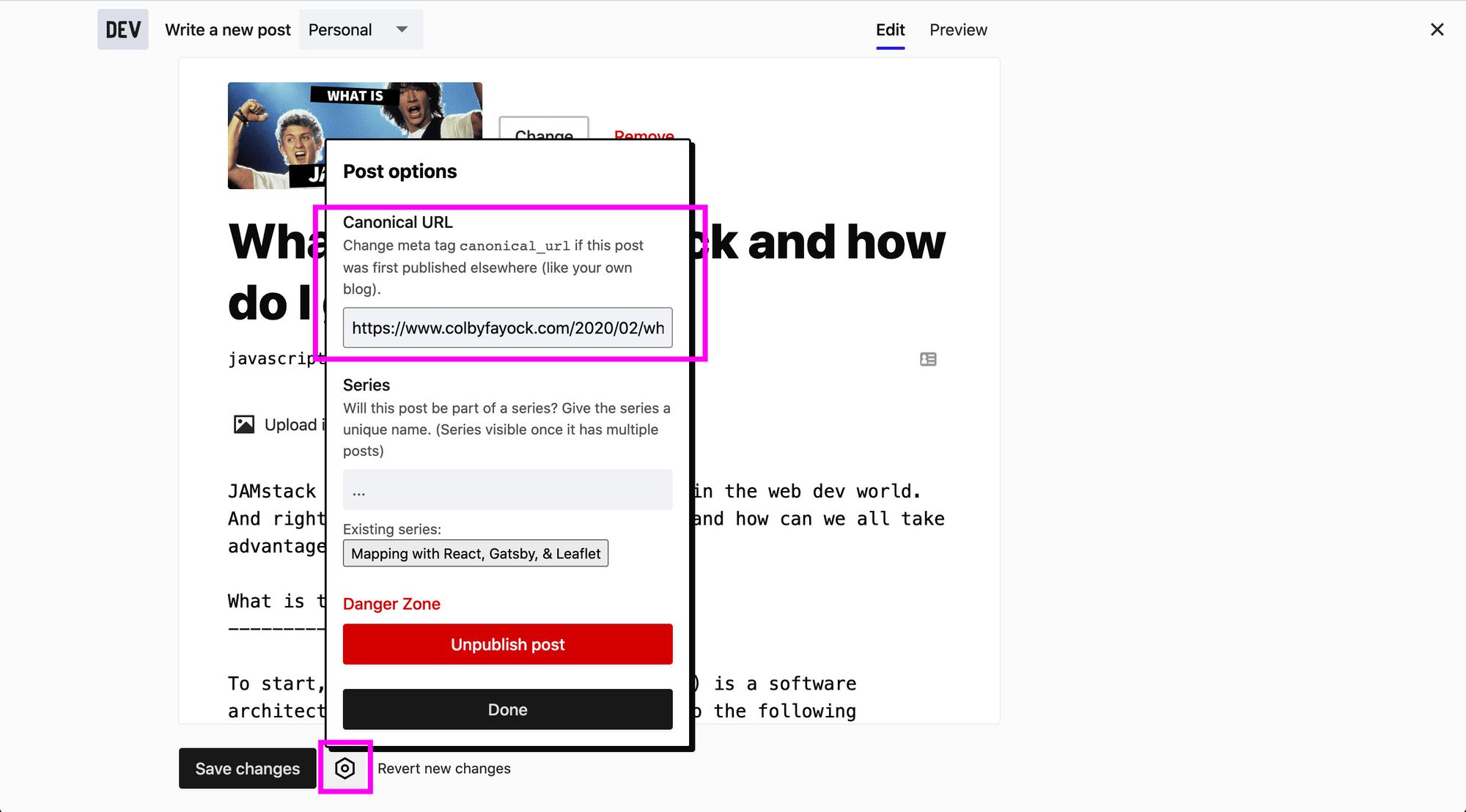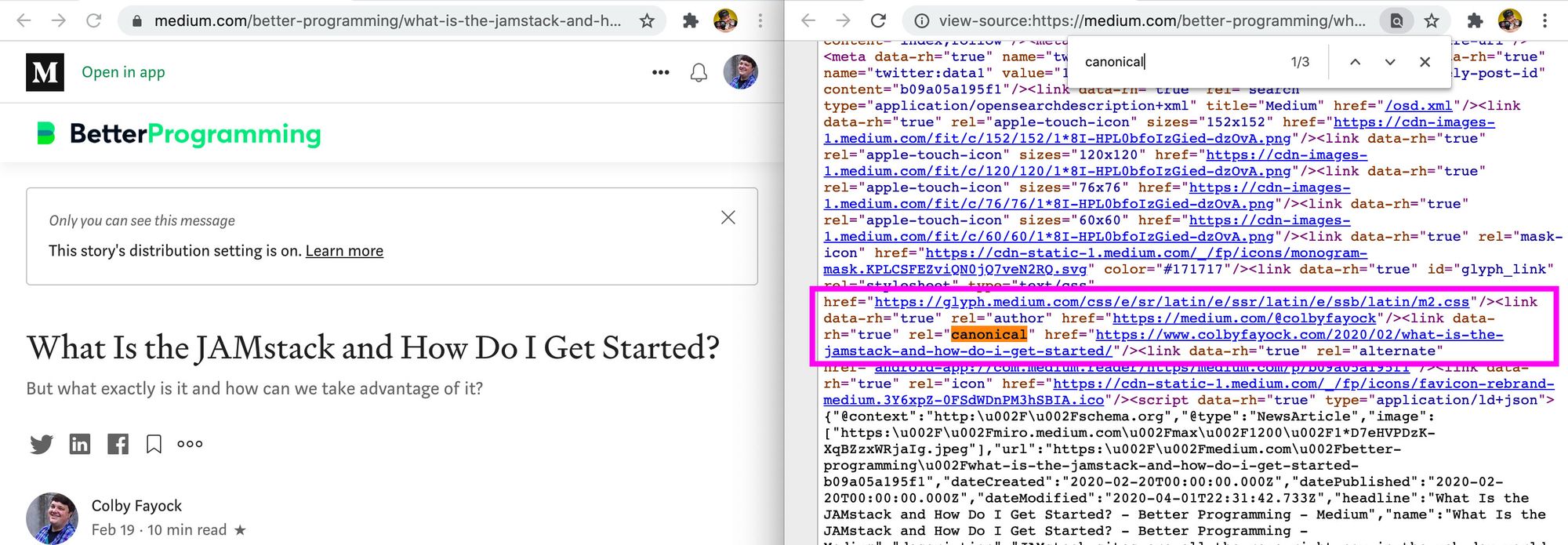How to Grow Your Audience and Share Your Content with the World
 Colby Fayock
Colby Fayock
Building quality content can be a really rewarding task. But for those just starting out or those who don't yet have a large audience, that content can easily get buried amongst the other million tweets on Twitter. How can we expand our reach and help our content impact more people?
- Creating our content for the masses
- What do I mean by building an audience?
- Leveraging larger platforms and publications
- Syndicating with other platforms
- Contributing to other publications
- Sharing on content curation platforms
- Other notable places
Creating our content for the masses
Every content creator has been there – you just wrote an article that you're super excited about and think it's going to be a massive hit. But you quickly find that overnight success never came when you wake up hoping to find thousands of likes on the tweet only to find none.
But that might not have anything to do with your article. It could absolutely be groundbreaking, but unfortunately there's not many people around to see it.
Social networks don't tend to prioritize their feeds based on how good your article is, but how much interaction and engagement that post received. While that kind of makes sense, that doesn't play well for people just starting out.
So how do we expand that reach? While the obvious route is to buy your way to the top with ads, I'm going to focus on more natural ways we can build our audience.
What do I mean by building an audience?
Your favorite web developers or social media influencers didn't start with 100,000 followers – most of them worked really hard to get where they are. That process is what building an audience is all about.
By creating content, you're working to find others who enjoy your take or get inspired by it. Ideally, those same people will follow you on their favorite platform with the hope that your next piece will inspire them just the same.
Your audience is those people who followed you or are actively engaging with the content you create. The ones who are supporting you by giving a thumbs up to your new video. The ones who subscribe to your newsletter because they're eager to see the awesome work you did that week.
By working hard on your content, being consistent, and finding your voice, you'll naturally build that audience. But to build that audience, people first need to see it. So how can we get it in front of people?
Leveraging larger platforms and publications
While your new blog might not have anyone subscribed to your RSS feed, there are platforms out there with large audiences that are actively looking for more authors.
By leveraging these audiences, you're helping to get your foot in the door. While you might need to give up a little bit of ownership of the article by writing it somewhere that's not your own blog, you're providing a means for more people to read your content and find out who you are.
This process can take many forms, but I'm going to focus on a few things:
- Syndicating with other platforms
- Contributing to other publications
- Sharing on content curation platforms
Syndicating with other platforms
Syndicating your content can be one of the more effective means of getting access to a larger network while holding on to a lot of the benefits of hosting your own content.
Not all platforms are the same, but most of the ones I'm going to go over allow you to provide a canonical link to your own website. What this does is allow you to publish your work on different platforms all while the "SEO juice" ultimately flows back to your own blog.
While it's important from an SEO perspective, it's also generally a good way to keep your content hosted on your own website where you know you'll maintain it for the foreseeable future. If one of those platforms ends up closing down, you still have all of your content safe at home.
So what are some platforms that we can syndicate with and how can you set it up?
Dev.to
Dev.to is the choice platform for developers who want to share their knowledge and open up conversation to the larger tech community. They provide an incredibly welcoming and safe space where developers experienced and new can publish their work.
The great part about it is that everyone seems to get a bit of a fair chance at getting their work out to the world. While they have similar features to other networks where you can follow your favorite authors, newer authors still show up in the content feed giving you a chance to be seen.
To syndicate on dev.to, you'll want to set up the canonical link in the post configuration. When editing the content, you'll want to look for the settings icon, where you'll then be provided with an input where you can add the original URL for your post.
 Adding a canonical URL to a dev.to post
Adding a canonical URL to a dev.to post
Medium
Medium has suffered a lot of criticism lately due to its aggressive tactics and monetization strategies, but it's still an effective platform for newcomers who don't have an audience to get in front of.
Medium's large network of users and content curation makes it a great platform for expanding your reach. But it doesn't stop at posting there.
To be effective with your Medium posts, you want to look to get published with an existing Medium publication. Better Programming is one of the larger developer publications that are always looking for new authors to contribute.
Submitting to a Medium publication will help you take advantage of not only Medium's network, but that publication's network that gives you a better chance of getting selected by Medium's curation team and landing in someone's newsletter inbox.
Adding a canonical link to your Medium posts is a bit trickier though. To do this, you must "import" your story rather than copy and pasting it in. The good news, is Medium also tries to import all of the content, ideally making it a bit easier to add (remember to review all of the formatting!).
On your Stories page, you can find the Import button.
 Importing a story on Medium
Importing a story on Medium
Once it's imported, you won't really be able to see much, but once you preview the page, you can view the source and find the canonical link added.
 Canonical link in Medium post source
Canonical link in Medium post source
Contributing to other publications
While you might have to give up ownership of your content, writing for other publications or writing as a "guest post" is a great way to get started and gain some ground where you might not have had any before.
Depending on the publisher, you might not ever get the opportunity to post it on your own website, but you're trading that for the privilege to get your work out to potentially millions of people instead of the 10 unique visitors from the month of May.
This can even open up the door to more opportunities. This helps give your name recognition and authority that can help in your job search or simply another chance to write for the same publisher or a different bigger one.
The good news – is there's an endless supply of big name publishers that you can submit your work to. Here are a few you can get started with:
- freeCodeCamp News
- Smashing Magazine
- CSS-Tricks
- Sitepoint
- Tuts+
- Web Designer Depot
- DZone
- Pluralsight Guides (See "Teach" in footer)
Each of these publications have different processes of getting published. So be patient and keep working hard at your content.
Note: know of another publisher that offers writing opportunities? Let me know and I'll add them above!
Sharing on content curation platforms
It would be great if we all had a massive Twitter following where we could post about our new blog, but that's typically not the case. So while you should absolutely set up a social media profile and get your content out there, I'll focus on other platforms here.
Though there are certainly rules about self-promotion depending on the subreddit, Reddit's a massive community of real people who are curious and eager to learn about something new.
Learn about the different tech or webdev subreddits that are out there. Start getting involved with other people's posts. Develop a relationship with the people there and show why your content has value.
Hacker News
Hacker News is tough. It's hard to get noticed and on the front page. And even when you get on the front page, there's a good chance you'll get a lot of criticism you never expected to get.
But if you can have thick skin and learn to take the heat should you get noticed, Hacker News can be an incredible way to broadcast to the world. People have turned into overnight successes by ending up on the front page of Hacker News whether they're the ones who posted it there or not.
More platforms
While those are two of the big ones, there are a ton more. Here are a few more to get you started:
Other notable places
Chat-based Communities
There are a ton of communities using platforms like Slack or Discord that are incredibly supportive in helping each other grow. While you shouldn't simply spam your content, try to start a conversation around it. Talk about why the topic is important to you or how your tutorial can help others in their code journey.
Newsletters
This is something a lot of people regret not starting earlier – myself included. It's not too much effort to start a newsletter with a platform that has a free tier and keep it in your back pocket until you see some growth. No one's going to judge you for waiting a few months to put out content, but once you begin to grow your audience, they'll be excited to see all of your new work.
Other people's newsletters
You don't have to have your own newsletter to get into someone's inbox, there are already a ton of newsletter curators doing a lot of hard work to find great content around the web, but if they don't see it, how can they include it?
Most newsletter publications love to receive submissions. This helps their publication grow and include content from people who might not have a good opportunity on their own.
While you can Google around and find a newsletter that makes sense for you, here are a few that I follow along with that I know would love to see your work:
- All Cooperpress Publications including Javascript Weekly, Serverless Status, and a bunch more
- Web Tools Weekly
- CSS Weekly
Building your "brand"
"Brand" is a funny word and can come sometimes come with negative connotations. But really as an author, your goal should be to build a presence that you carry with you consistently through all of your different outlets of work.
For instance, when possible, try to always use the same username when creating author profiles. You can find me mostly anywhere at @colbyfayock – it makes it easy for people to find me on a new network.
Also try to use the same picture. While it's definitely fun to customize your different profiles depending on who's there, the benefit of using the same picture is people will come to recognize you by that picture. They'll instantly be able to remember they saw your blog post when they see your tweet come through their feed.
Be patient, your time will come
You're not going to find an overnight success without spending a lot of money, so be patient. Content development is hard, it takes time to both build an audience and figure out your voice.
But chances are, if this is your first article you've ever written, maybe that first publisher you sent it to wasn't interested in it.
THAT'S OKAY! Don't give up! Send it to another publisher and try the original one for your next article. When I first started out, it took a few articles before I got accepted as an author to freeCodeCamp's Medium publication.
The more you write, the more you'll learn about what's effective. It's not a sprint – be patient and just keep up the hard work.
Overcoming the fear of sharing your work
Most of these things aren't easy to do. The idea that you might have to face critical feedback of your work is absolutely scary!
But overcoming this fear is an important step of the process. I personally struggled with this when I began writing, but the more you put yourself our there, the less scary it becomes and you'll quickly notice there aren't as many bad people out there looking to say bad things about your work.
Instead, you're opening yourself up to an opportunity to learn and grow. Though not everyone's the same, the tech community can be overwhelmingly welcoming and supportive. The more you share and put yourself out there, the more receptive people will be to wanting to hear what you have to say.
How do you share your work?
Subscribe to my newsletter
Read articles from Colby Fayock directly inside your inbox. Subscribe to the newsletter, and don't miss out.
Written by

Colby Fayock
Colby Fayock
Director of DevX Engineering @ Cloudinary
